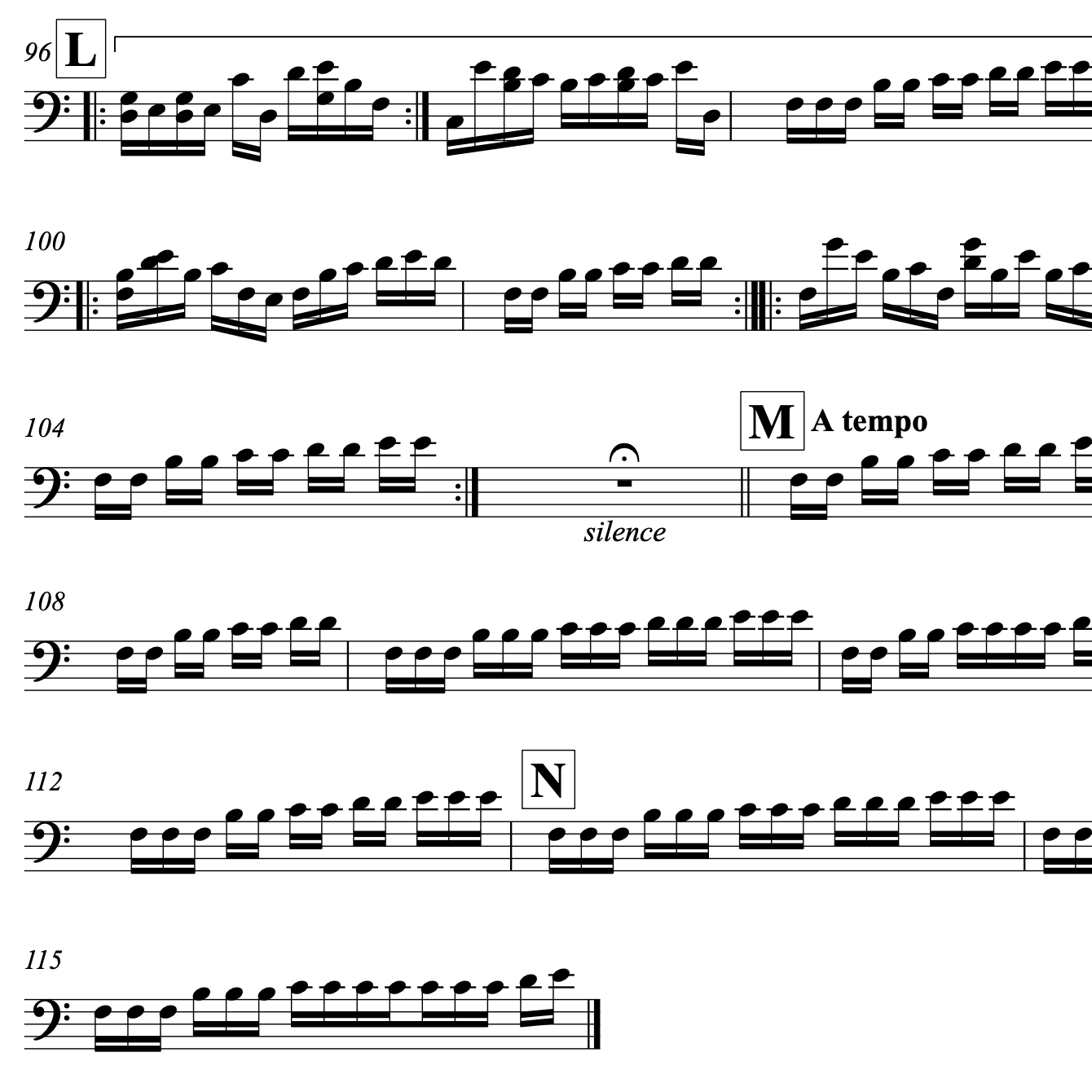Étude
piano solo [or] open instrumentation
(2008)
indeterminate
This early piece was composed for Evelyn Jundt as a final project for Marc Ponthus’s contemporary repertoire course in 2008. Evi’s left arm was broken at the time. I wanted to write her a repeated-note study for the right hand that would be somewhat playful, with a rhythmic ostinato that expanded and contracted intuitively. No tempo or dynamics are indicated: I wanted Evi to experience this piece in the manner of her choosing while she recovered. I felt this releasing of parameters was a way of exercising my teacher’s advice to work on pieces at different times of the day, in different states of mind. To me, this was more than a good composition lesson: this was a restorative way to approach music as a listener and a performer, too.
Though the piece is dogmatically focused on an F centricity, with a modified blues form underpinning the overall harmonic structure, there are no A’s or A-flat’s in the piece. Intending to empathize with Evi’s injury in the writing of the piece, I removed my two favorite scale degrees… I am, after all, a jazz pianist at heart. The basic idea of the piece is a partially scalar statement of the F-lydian mode, emphasizing the Viennese trichord’s presence within the motive. This is Fred Fehleisen’s fault: his classroom dramatization of Leopold waking up a tiny Wolfgang with an unfinished scale continues to live rent-free in my head.
This piece can be performed by a solo pianist, but all instrumentalists or singers are welcome to interpret the score for any purpose. Though pitched instruments must adhere to the octaves specified in the score, musicians are encouraged to perform on all pitches on which they are able. Percussionists playing instruments with indeterminate pitches and vocalists drawn to unpitched techniques are invited to develop and improvise grooves following the contours and rhythmic patterns of the score.
In an open instrumentation format, the scored melody must be played in full by at least one performer. (This can be on a piano, a synthesizer, a digital keyboard, a marimba, a harp, etc. but any player (or players, if it is a larger band!) performing the entirety of the scored line must be clearly heard throughout the performance. Pre-determining a soloist or core group of players to play the scored melody in its entirety, the rest of the band is encouraged to improvise constantly evolving rhythmic hockets on the unison of the scored passage. But, this piece can be interpreted in so many ways, I encourage you to simply come up with one that you like.
